This is a summarized translation of an article published on the Litmus.com blog by Justine Jordan.
In 2015, Litmus tracked over a billion emails each month, measuring where and how messages are opened around the world. While the top 3 email clients measured in January remained the same in November, there were big events throughout the year.
- iPhone, Gmail and iPad remained in the top 3 throughout the year
- Android started in 6th place and finished 4th
- Outlook moved from 4th to 5th place
Mobile, webmail and desktop trends
In the second half of 2015, mobile opens continued to rise, from 49% in June to 54% in November. This is in line with the trend Litmus has seen in previous years, consumers are more likely to use their mobile devices during the vacation season.
Openings on webmails and desktop clients have declined significantly in 2015, each dropping 13% since January.
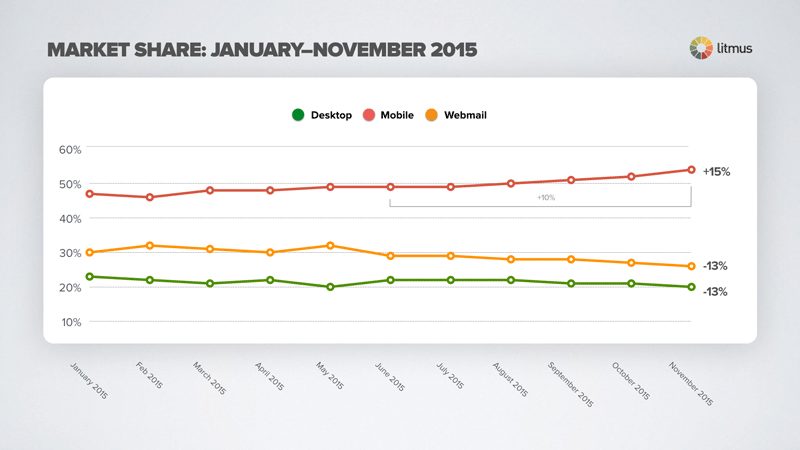
The top 10 between January and November
The comparison of the top 10 between January and November shows important variations mainly in the iPhone, Gmail, Android and Outlook.
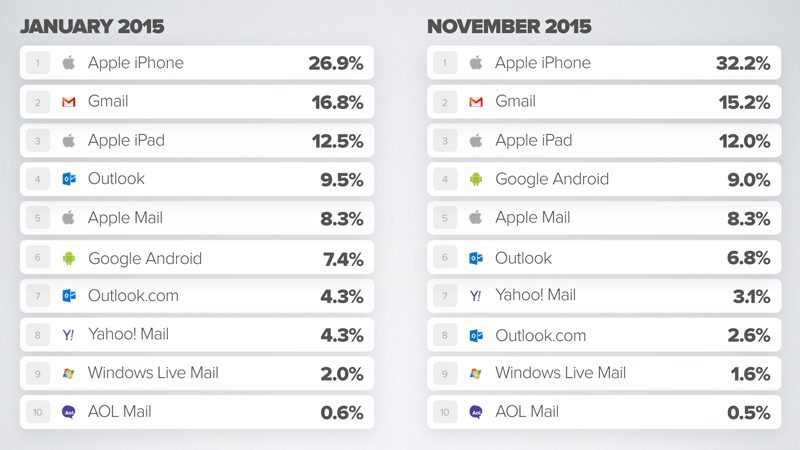
The iPhone continues to be very popular, increasing by nearly 20% over the entire year while at the same time Gmail dropped by about 9%. Remember, since Gmail started caching images, it became impossible to see the difference between Gmail mobile and webmail opens.
If it is impossible to see if the fall of Gmail comes from the web or mobile, it is also interesting to note the massive increase in Android openings, 31% gained over the year.
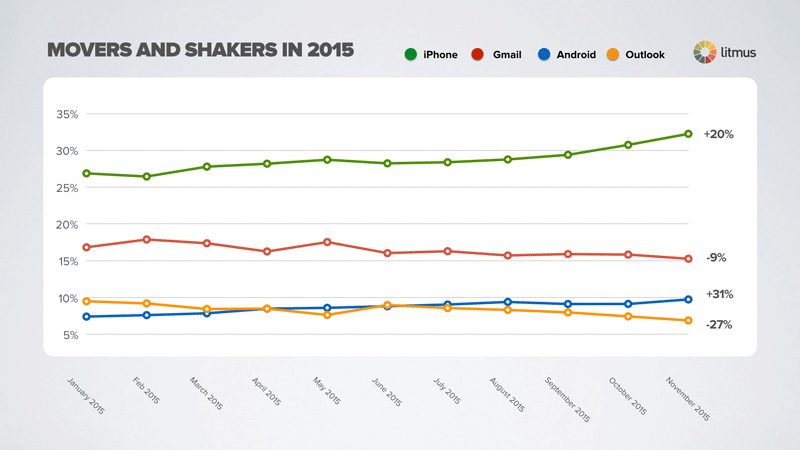
Need help?
Reading content isn't everything. The best way is to talk to us.
Gmail users may be frustrated with the mobile experience
Gmail's drop and increase in opens on iPhone and Android could suggest that Gmail users are switching back to the native apps on these smartphones. Gmail apps on iOS and Android have notoriously poor responsive design support, which can lead to a frustrating user experience.

Gmail users might prefer a better reading experience. On Android, users have massively switched to version 5.x (Lollipop), with version 4.x (Ice Cream Sandwich and KitKat) having declined rapidly.
Outlook is progressively losing ground
Since the beginning of 2015, Outlook's Desktop application began to decline, over the entire year, openings were down 27%.
While in general Outlook's popularity is on the decline, older versions of the email client (which also have better HTML support) are gradually disappearing, leaving room for the latest versions.
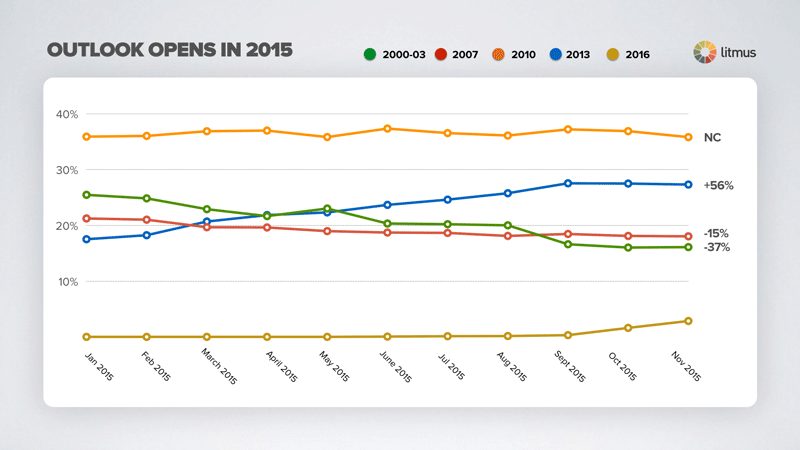
Poor HTML and CSS support in Gmail and Outlook has made these email clients the bane of email developers and designers. Despite some promising signs in early 2015, the email community remains pessimistic about standards compliance for email. 61% of them believe they will never have access to industry-wide accepted standards.
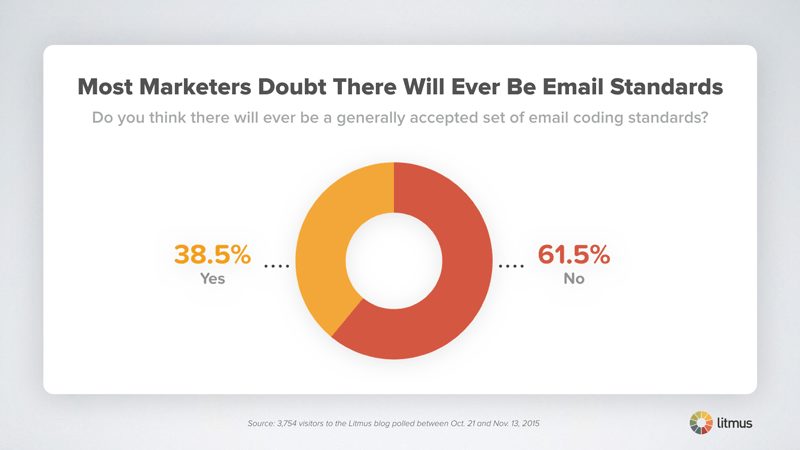
Despite these challenges, 2015 saw some incredible innovations from the email community, pushing the boundaries of what is possible with email even further.
Leave a Reply